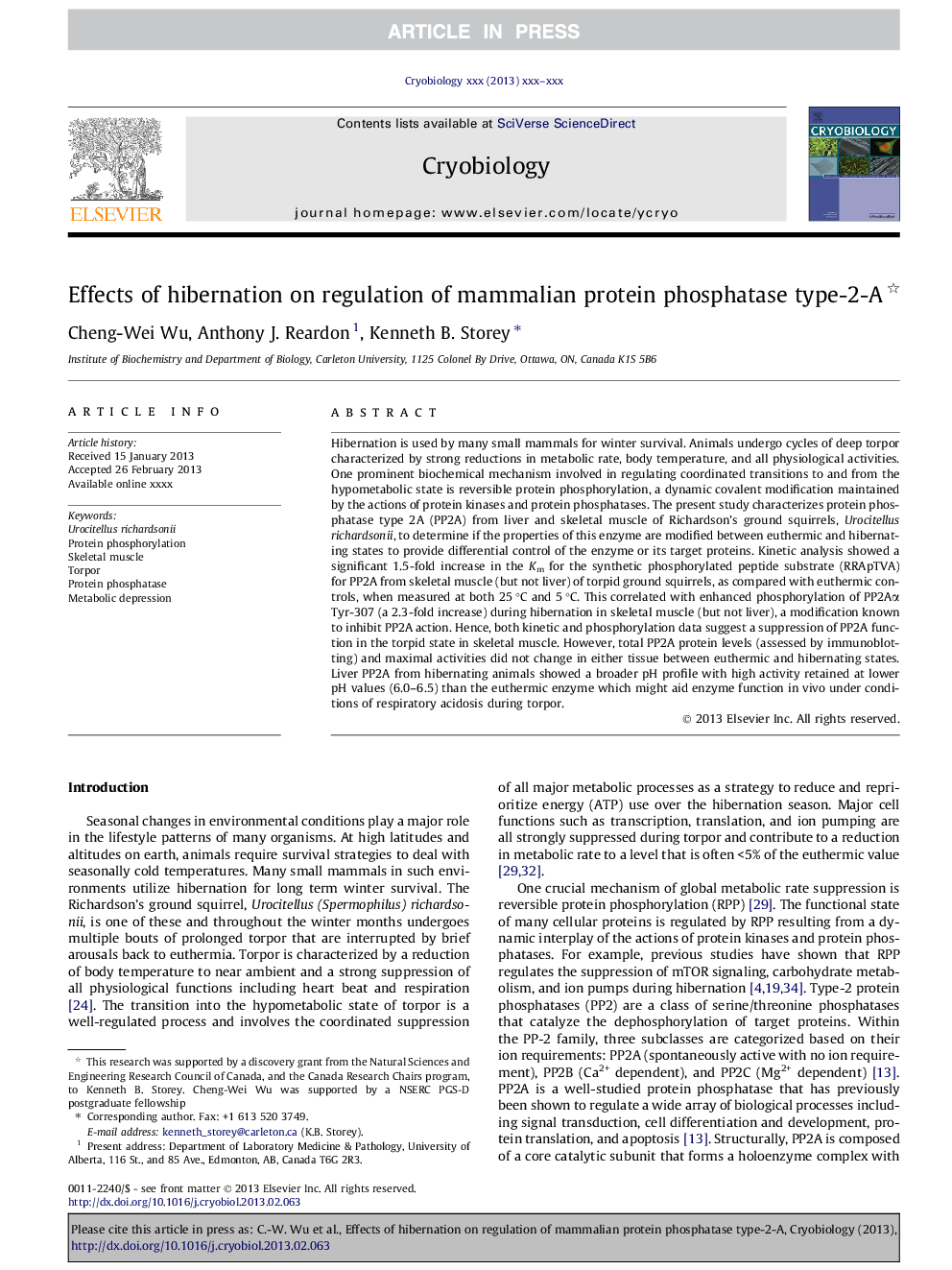| Article ID | Journal | Published Year | Pages | File Type |
|---|---|---|---|---|
| 10928101 | Cryobiology | 2013 | 8 Pages |
Abstract
Hibernation is used by many small mammals for winter survival. Animals undergo cycles of deep torpor characterized by strong reductions in metabolic rate, body temperature, and all physiological activities. One prominent biochemical mechanism involved in regulating coordinated transitions to and from the hypometabolic state is reversible protein phosphorylation, a dynamic covalent modification maintained by the actions of protein kinases and protein phosphatases. The present study characterizes protein phosphatase type 2A (PP2A) from liver and skeletal muscle of Richardson's ground squirrels, Urocitellus richardsonii, to determine if the properties of this enzyme are modified between euthermic and hibernating states to provide differential control of the enzyme or its target proteins. Kinetic analysis showed a significant 1.5-fold increase in the Km for the synthetic phosphorylated peptide substrate (RRApTVA) for PP2A from skeletal muscle (but not liver) of torpid ground squirrels, as compared with euthermic controls, when measured at both 25 °C and 5 °C. This correlated with enhanced phosphorylation of PP2Aα Tyr-307 (a 2.3-fold increase) during hibernation in skeletal muscle (but not liver), a modification known to inhibit PP2A action. Hence, both kinetic and phosphorylation data suggest a suppression of PP2A function in the torpid state in skeletal muscle. However, total PP2A protein levels (assessed by immunoblotting) and maximal activities did not change in either tissue between euthermic and hibernating states. Liver PP2A from hibernating animals showed a broader pH profile with high activity retained at lower pH values (6.0-6.5) than the euthermic enzyme which might aid enzyme function in vivo under conditions of respiratory acidosis during torpor.
Related Topics
Life Sciences
Agricultural and Biological Sciences
Agricultural and Biological Sciences (General)
Authors
Cheng-Wei Wu, Anthony J. Reardon, Kenneth B. Storey,
